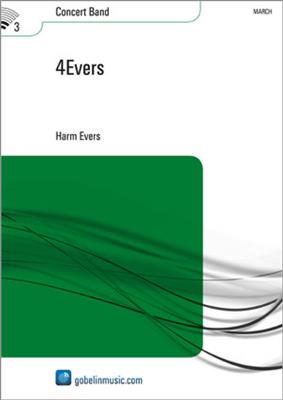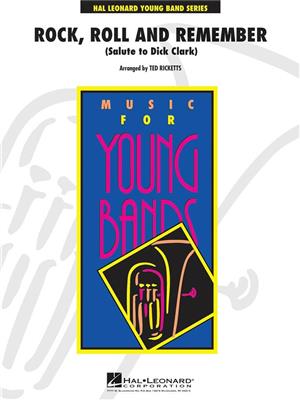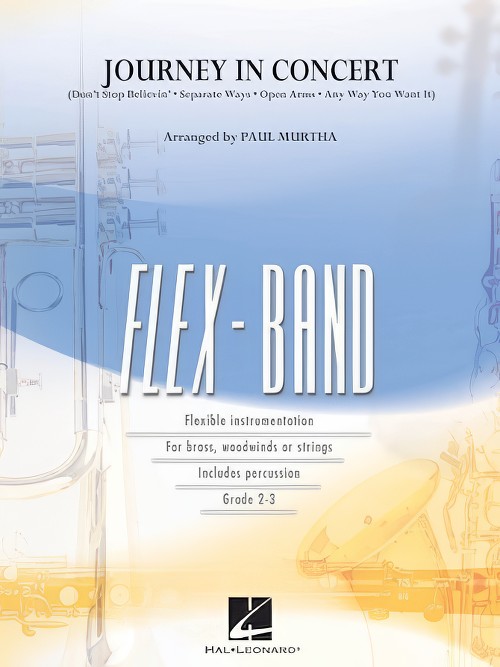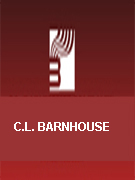Results
-
 £60.99
£60.99Soldiers Song - Patrick Millstone
As long as we can remember, trumpets and percussion have been the instruments most closely associated with the army and its soldiers. Just think of the medieval herald who publicly proclaimed all the king's important announcements. This work opens with a festive fanfare which immediately calls for your attention. No tidings of disaster, but a festive parade of soldiers passing by while whistling merrily. This idea was the composer's starting point when writing this cheerful little piece.
Estimated dispatch 7-14 working days
-
 £139.99
£139.994Evers - Harm Evers
4Evers is a brilliant selection of four marches composed by Harm Evers, the king of march music! Includes the titles: In Festive Mood, Parade of Sails, Time Square and Pioneers March.
Estimated dispatch 7-14 working days
-
 £76.95
£76.95Star Wars: The Marches - John Williams
John Williams created so many stunning marches to accompany the Star Wars motion pictures that they had to be combined in one powerful piece. The arrangement features: "Star Wars (Main Theme)," "Parade of the Ewoks," "The Imperial March," "Augie's Great Municipal Band" and "The Throne Room." A bold medley of a wide variety of marches to ensure a standing ovation! (6:45) This title is available in SmartMusic.
Estimated dispatch 7-14 working days
-
 £72.99
£72.99Rock, Roll and Remember (Salute to Dick Clark)
Since the 1950s, the name Dick Clark has been synonymous with the hottest names in popular music. Appearing on his long-standing series American Bandstand was a hit parade of trend-setting artists. Here is a fun, fast-paced medleyof some of the signature moments from the Dick Clark era: Bandstand Boogie (AB theme song), Rock Around the Clock (Bill Haley), The Twist (Chubby Checker), Don't Worry Baby (Beach Boys), Rockin' Robin (Michael Jackson), and YMCA(Village People). Also included is an optional tag on Auld Lang Syne remembering many years of Dick Clark's New Year's Rockin' Eve.
Estimated dispatch 7-14 working days
-
 £60.99
£60.99Journey In Concert (Flexible Ensemble - Score and Parts) - Murtha, Paul
Few rock bands from the 1980's can boast the level of popularity and parade of hits produced by the band Journey. This terrific medley for flexible instrumentation includes Any Way You Want It, Don't Stop Believin', Open Arms, and Separate Ways.
Estimated dispatch 7-14 working days
-
 £59.40
£59.40Albemarle (Concert Band - Score and Parts)
Reminiscent of Jay's superb "Parade of the Tall Ships" but at an easier level, this dynamic overture is certain to become a standard. An outstanding opener for your next concert!
Estimated dispatch 7-14 working days
-
 £59.95
£59.95Santa's Toy March
Santa's Toy March is a joyful and exciting addition to any holiday program for the beginning concert band. Several well known holiday favorites set the stage for the parade of toys to follow. You will hear the Toy March from The Nutcracker, Jolly Old St. Nicholas and Up on the Housetop. This arrangement also features the percussion section quite a bit, so let them shine! Finishing up with a triumphant march, your group will play the group of toys right into Santa's bag for their journey to children on the Nice list.
Estimated dispatch 7-14 working days
-
£76.99
Northwest Overture - Jay Chattaway
Reminiscent of Jay's superb "Parade of the Tall Ships" but at an easier level, this dynamic overture is certain to become a standard. An outstanding opener for your next concert!
Estimated dispatch 7-14 working days
-
 £58.50
£58.50The Ant Bully, Selections from (Concert Band - Score and Parts) - Debney, John - Lopez, Victor
Capturing all the enticing themes, Selections from The Ant Bully is a fantastic Victor Lopez arrangement, sure to energise your pops concert! Includes: Parade of the Ants; Sweet Rocks; Team Competition; Zoc and Lucas Talk; Zoc Attempts Potion. Duration: 5.15
Estimated dispatch 7-14 working days
-
 £84.99
£84.99Crazy Crowd Wind Band Set (Score & Parts)
Crazy Crowd is a fun piece in which we meet a comical parade of eccentric figures: A drum major, a clumsy clown, a dancing robot, a charming princess, an ailing acrobat, a timid spy, and more! Where do you fit into this line-up?! 11:30
Estimated dispatch 7-14 working days
